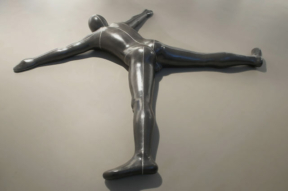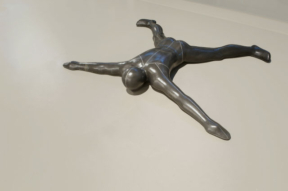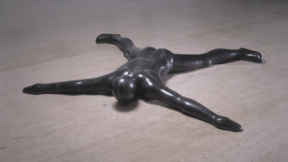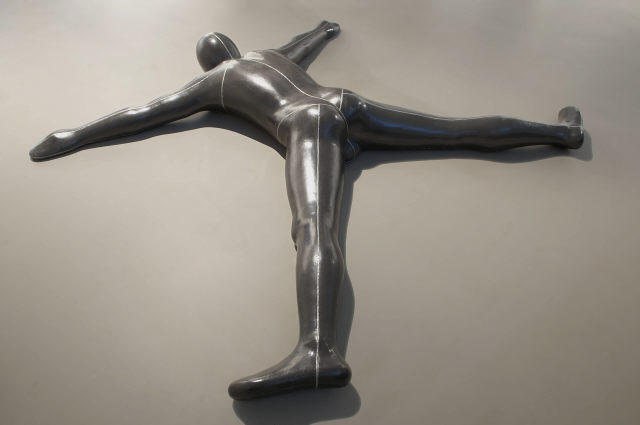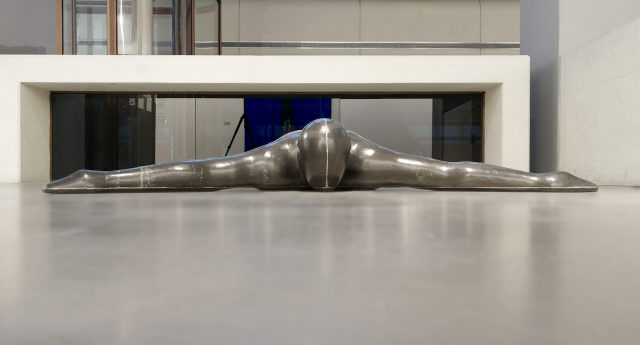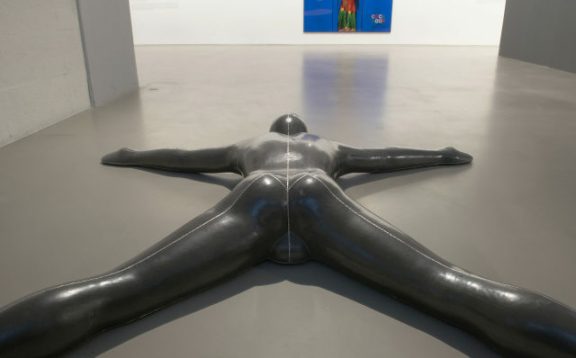
- 1993
- Air, Lead, Fibreglass and Plaster
- A definir
- Inv. 95EE46
Antony Gormley
Close II
Sculptural representation of the human figure, and, by extent, this particular strand in the tradition of western sculpture was reshaped in the groundbreaking, idiosyncratic work of Antony Gormley, which cut across the boundaries between private and public space. In Gormley’s sculptures the body is liberated from its biomorphic confines, set free from the fetters of gender or race and becomes a “place” that carries the imprint of personal, subjective experience. But quite apart from the individual body as memory, Gormley’s work also traces the collective memory of mankind, the history and tradition of its peoples. The figures he creates tell the story of man’s metaphysical journey through life, through history and religion, while also offering testimony of the experience of the everyday.
British sculpture of the 1980s was a crossbreed between the abstract and the figurative. The historical survival of the readymade, an influence of pop art imported from the US, was promised in the work of a great number of British artists that adopted the use of industrial and everyday objects.
Still, Gormley opted for a sort of “classic”, representational sculpture, investing his works with new spiritual and physical qualities while also making them distinctly personal: after 1981, the artist would come to use his own body as a matrix for his work, rendering it a medium through which the creative process was completed, a mold holding the mental cast that is then “transformed” into sculpture. Gormley’s works develop dynamically into space and seem poised on a curious edge between movement and stillness. Close II is a case in point. A human figure of unknown sex lies face down on the floor, its arms and legs outspread. This biomorphic volume of cast plaster, encased in fiberglass and covered by a layer of lead, gleams smooth and has the appearance of a thing of value. Yet, its prostrate posture evokes a range of human states and activities, from despair and prayer, to death. From roughly 1990 onward, many of Gormley’s works seem to express an explicit concern over man’s direct relationship with the earth. In Close II, man becomes a channel for the flow of energy, himself the very upshot of a performance, a ritual ceremony that casts the memory of movement into sculptural form. Gormley’s figures often bear the stamp of the unexpected, recalling the quality of “randomness” that Dadaist and Surrealist automatism sought after. Ambiguity and irony, the unexpected, the random and the metaphysical, all have a place in this stern, compact volume that seems to encroach upon our very own personal, everyday space.
There is a profound mystical aspect to Gormley’s work. This work often seems to be speaking of silence and of the metaphysical mystery as defined in the religious traditions of Buddhism and Hinduism, which the artist explored to great depth especially during the first half of the 1970s.
Margarita Kataga
May 2010
| Type | Value | Unit | Section |
| Height | 37 | cm | |
| Depth | 174 | cm | |
| Width | 201 | cm |
| Type | Acquisition |
| Linhas de Sombra |
| Lisboa, Fundação Calouste Gulbenkian e Centro de Arte Moderna, 1999 |
| ISBN:972-635-115-4 |
| Catálogo de exposição |
| A Ilha do Tesouro |
| Lisboa, Centro de Arte Moderna, Fundação Calouste Gulbenkian, 1997 |
| ISBN:972-635-100-6 |
| Catálogo de exposição |
| A Ilha do Tesouro / Treasure Island |
| CAMJAP/FCG |
| Curator: CAMJAP/FCG |
| 7 de Fevereiro de 1997 a 4 de Maio de 1997 Todo o espaço expositivo do CAM - pisos 0, 1 e 01, e Galeria de Exposições Temporárias. |
| Comissários da exposição: Jorge Molder e Rui Sanches. |
| A Ilha do Tesouro / Treasure Island |
| CAMJAP/FCG |
| Curator: CAMJAP/FCG |
| 7 de Fevereiro de 1997 a 4 de Maio de 1997 Todo o espaço expositivo do CAM - pisos 0, 1 e 01, e Galeria de Exposições Temporárias. |
| Comissários da exposição: Jorge Molder e Rui Sanches. |
| Linhas de Sombra |
| Fundação Calouste Gulbenkian |
| Curator: Fundação Calouste Gulbenkian |
| 29 de Janeiro de 1999 a 18 de Abril de 1999 Lisboa |
| Exposição comissariada por João Miguel Fernandes e Maria Helena de Freitas e programada por Jorge Molder e Rui Sanches. |
